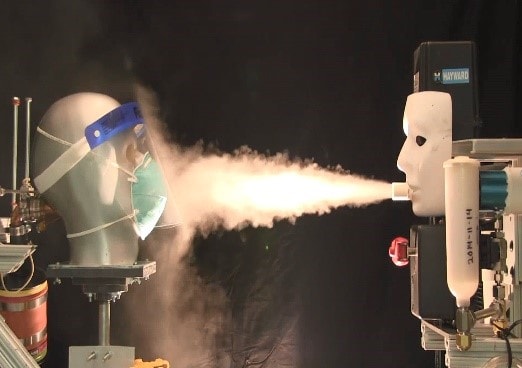Key points
- Aerosols are small particles in the air that can be harmful.
- NIOSH studies how to protect workers from harmful effects of aerosols.
- NIOSH offers guides and tools to keep workers safe from harmful aerosols.

Overview
An aerosol can be defined as a suspension of particles or droplets in air. Aerosols may include airborne dusts, mists, fumes, or smoke.
Suspended particle sizes may range from a few nanometers (nm) to hundreds of micrometers (µm) in diameter. For comparison a human hair may be between 20 to 180 µm in diameter. Particles can be manufactured or naturally occurring.

Aerosols in the workplace may pose both health and safety hazards. Aerosols are encountered across multiple industry sectors. Particles can be inhaled, absorbed by the skin, enter the eyes or be ingested. Factors such as particle size, composition, shape, and concentration, can determine whether particles can cause harm to workers. Harmful effects can be either short or long term. Safety hazards may include slips, fires, or explosions.
Research
NIOSH has carried out extensive aerosol research in exposure assessment, epidemiology, toxicology, risk mitigation, aerosol sampling and method development. This assists our understanding in:
- How aerosols are formed and transported through the workplace.
- Which workers may be most impacted and to what extent.
- The health implications to workers.
- The safety implications in the workplace.
- How to sample for and measure aerosols in the workplace.
- How to reduce or eliminate the health and safety hazards.
Hierarchy of Controls
Resources
Below are some related resources based on NIOSH research.
Webpages
Reports
Mining products
- Dust Control Handbook for Industrial Minerals Mining and Processing. Second edition
- Best Practices for Dust Control in Coal Mining. Second edition
Search NIOSHTIC-2 Database
NIOSHTIC-2 is a searchable bibliographic database of publications, documents, grant reports, and journal articles. Suggested key words: aerosol, particulate matter, dust, mists, fume, exhaust, aerosol or dust sampling, aerosol or dust exposure, combustible dusts.
